Summary
- Faraday's law
- Generators
- Lenz's law
- Induced electric fields
POP5 23.OQ.15
What is the direction of the current in the resistor at an instant immediately after the switch
is thrown closed?
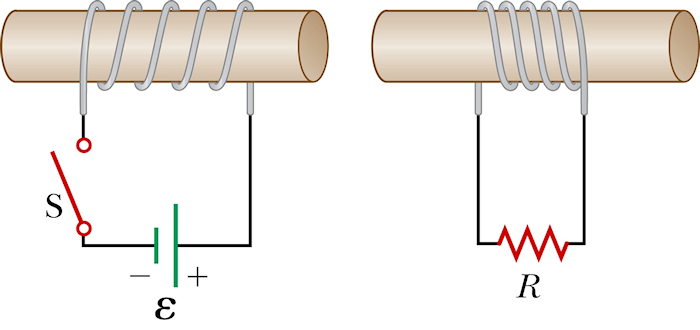
A. left
B. right
C. the current is zero
Answer
POP4 23.30
What is the magnetic flux through each turn of a 500-turn coil when a 24 mV emf is induced by
a 4.0-A current that is changing at a rate of 10 A/s?
A. 96.0 nT·m2
B. 19.2 µT·m2
C. 500 µT·m2
D. 47.5 mT·m2
Answer
POP5 23.37a
A 12.0-V battery is connected into a series circuit containing a 10.0-Ω resistor
and a 2.00-H inductor. In what time interval will the current reach 50.0% of its final
value after the switch is closed?
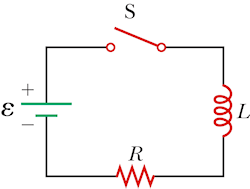
A. 3.47 µs
B. 288 µs
C. 9.85 ms
D. 0.139 s
Answer
PSE6 32.20
In the figure, ε = 12.0 V, the time constant
is 500µs, and Imax = 200 mA. What is L?

A. 500 µH
B. 2.75 mH
C. 30.0 mH
D. 1.20 H
Answer
POP5 23.48
How much energy is stored in a superconducting solenoid of diameter 6.20 cm and length 26.0 cm when
it produces a 4.50 T magnetic field?
A. 8.06 MJ
B. 522 kJ
C. 6.32 kJ
D. 1.77 J
Answer
Knight2 stt 34.6
The potential at point (a) is higher than the potential at (b). Which of the following statements about the inductor current I could be true?
 A. I is from (a) to (b) and steady.
A. I is from (a) to (b) and steady.
B. I is from (a) to (b) and increasing.
C. I is from (a) to (b) and decreasing.
D. I is from (b) to (a) and steady.
E. I is from (b) to (a) and increasing.
F. I is from (b) to (a) and decreasing.
Answer
Walker5e EYU 23.8
Consider the circuit shown below. The current supplied by the battery immediately after the switch is closed is _____ the current it supplies a long time after the switch is closed.
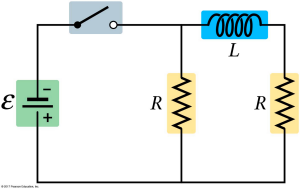 A. greater than
A. greater than
B. less than
C. equal to
Answer
B. right
The battery makes counterclockwise current I1 in
the primary coil, so its magnetic field B1 is to the right and increasing
just after the switch is closed. The secondary coil will oppose the change with a leftward field
B2, which comes from an induced clockwise current I2 that goes
to the right in the resistor.
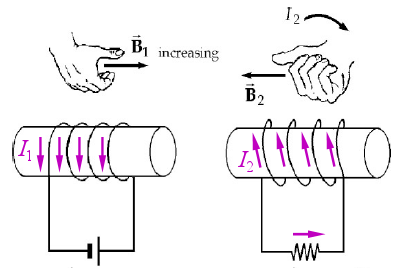
B. 19.2 µT·m2
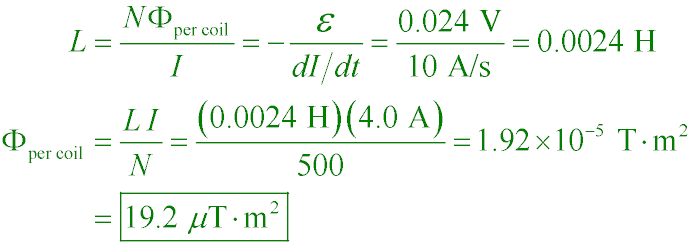
D. 0.139 s
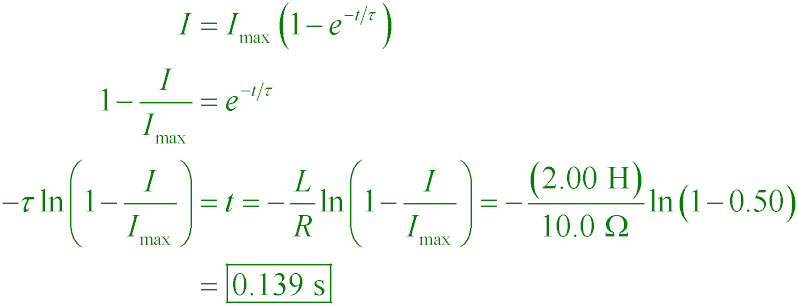
C. 30.0 mH
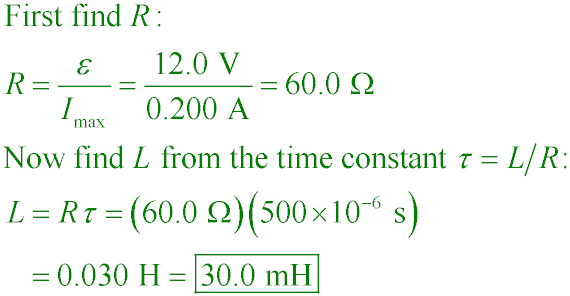
C. 6.32 kJ


B. I is from (a) to (b) and increasing.
In this case the induced emf is trying to fight against the current toward the right (from a to b) because the current is increasing. The back emf always opposes the change in magnetic flux through the inductor, which means it always opposes the change in current through the inductor. When the current is increasing toward the right, the inductor represents a temporary source of emf attempting to push current toward the left.
F. I is from (b) to (a) and decreasing.
In this case the induced emf is trying to sustain the current toward the left (from b to a) because the current is decreasing. The back emf always opposes the change in magnetic flux through the inductor, which means it always opposes the change in current through the inductor. When the current is decreasing as it flows toward the left, the inductor represents a a temporary source of emf attempting to push current toward the left.

B. less than
Initially no current flows through the inductor because of back emf. Hence the inductor acts like an open circuit and the current supplied by the battery is I0 = ℰ/R (all current flows through lefthand resistor). After a long time, the current is no longer changing and the back emf in the inductor is zero. The inductor then acts like a wire, the current splits evenly between the two resistors, the equivalent resistance of the circuit is R/2, and the current supplied by the battery is I∞ = 2ℰ/R.

Answer

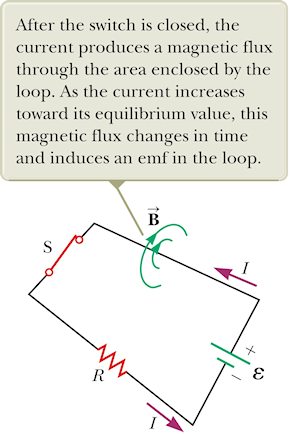
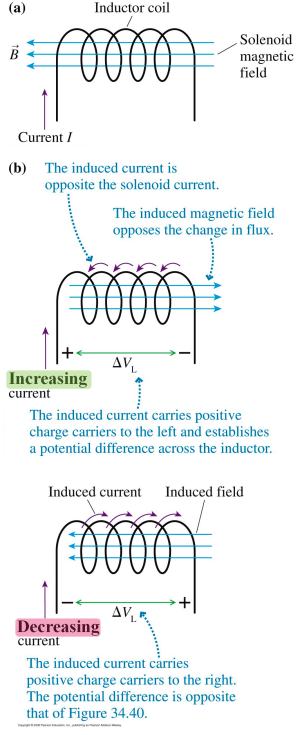
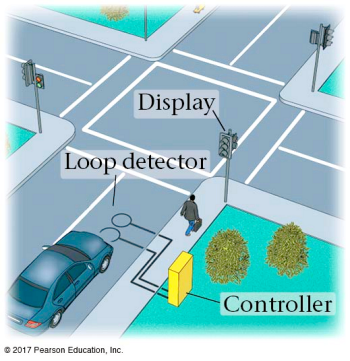



 A. I is from (a) to (b) and steady.
A. I is from (a) to (b) and steady. A. greater than
A. greater than





